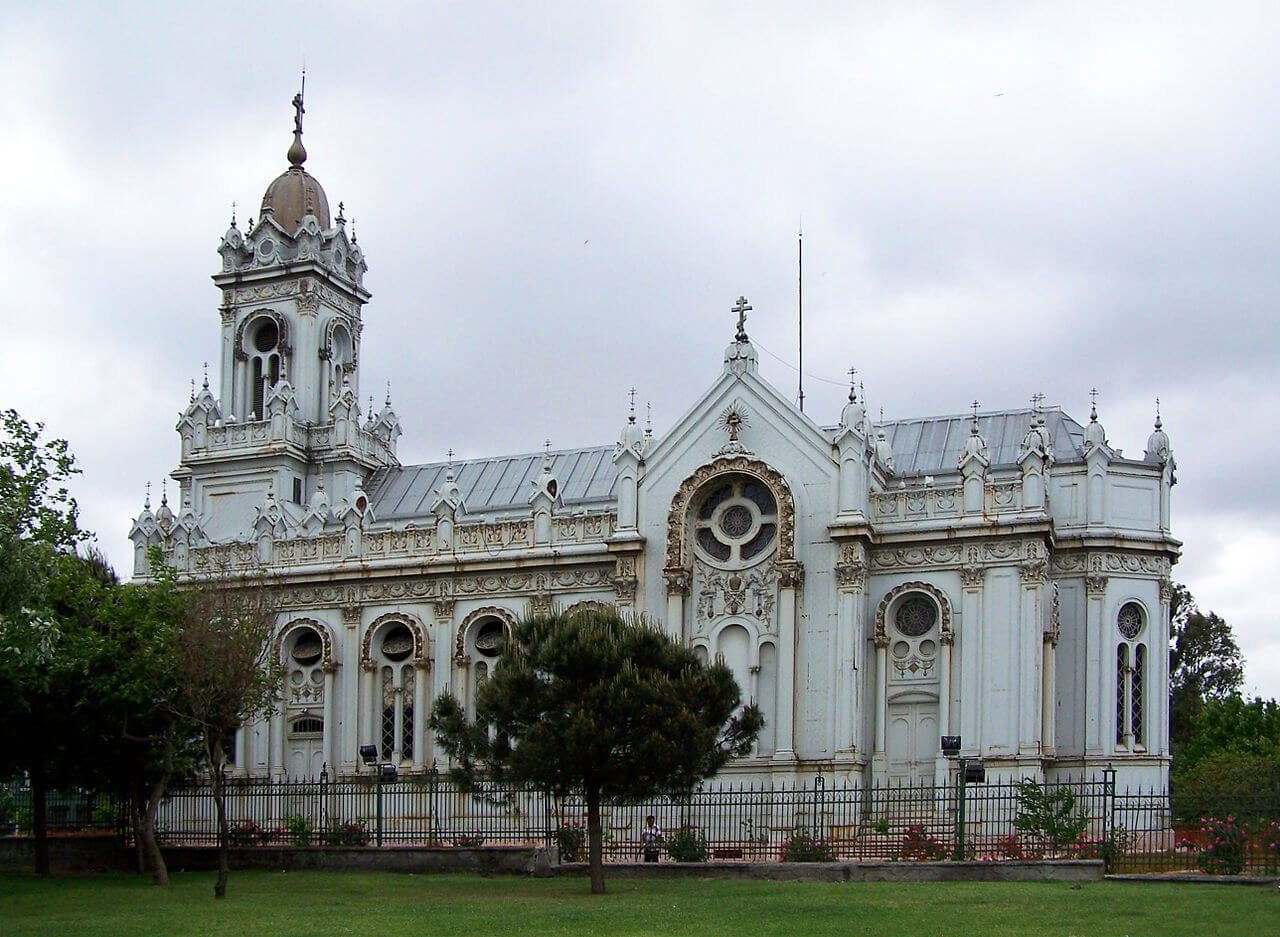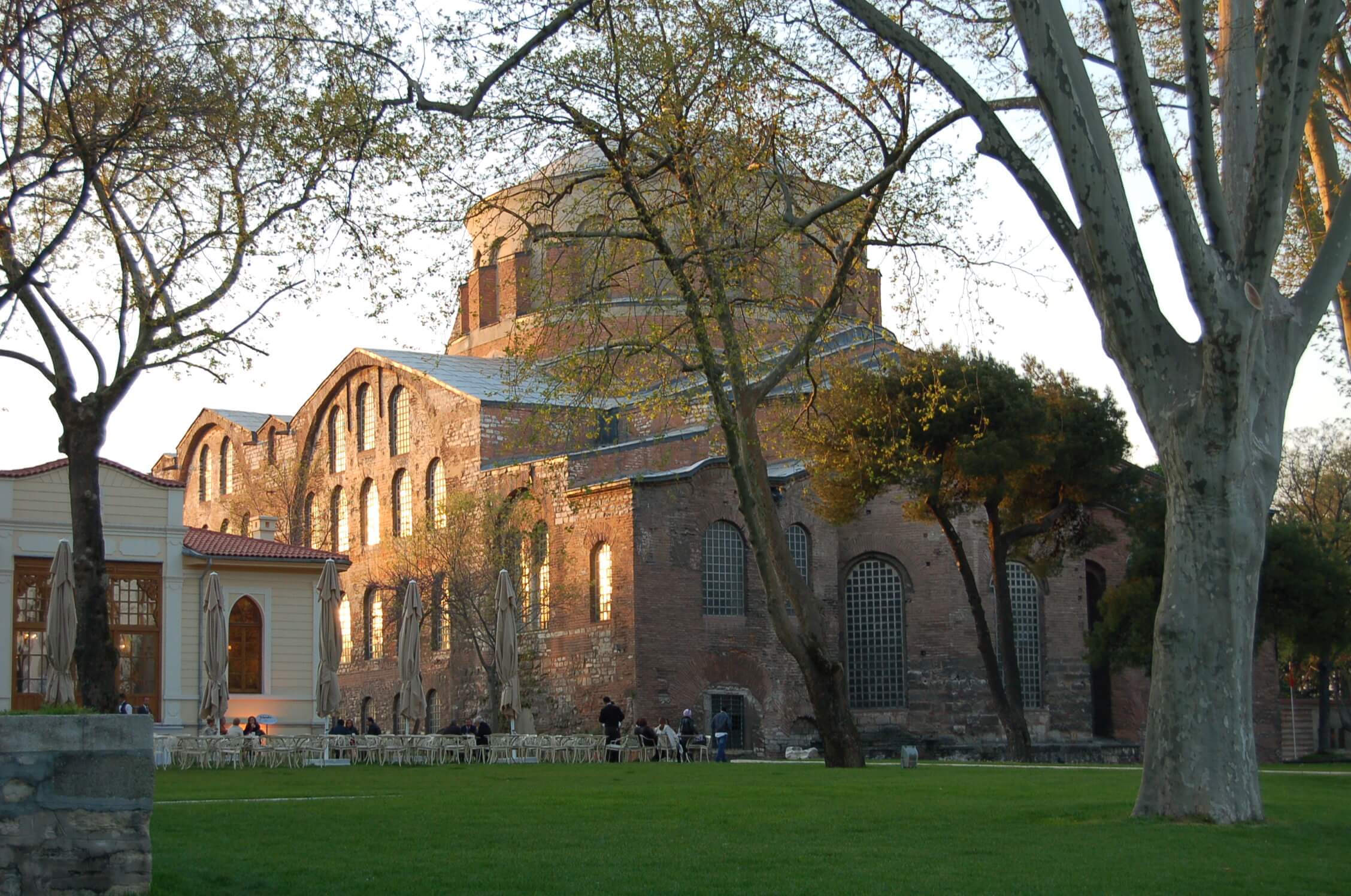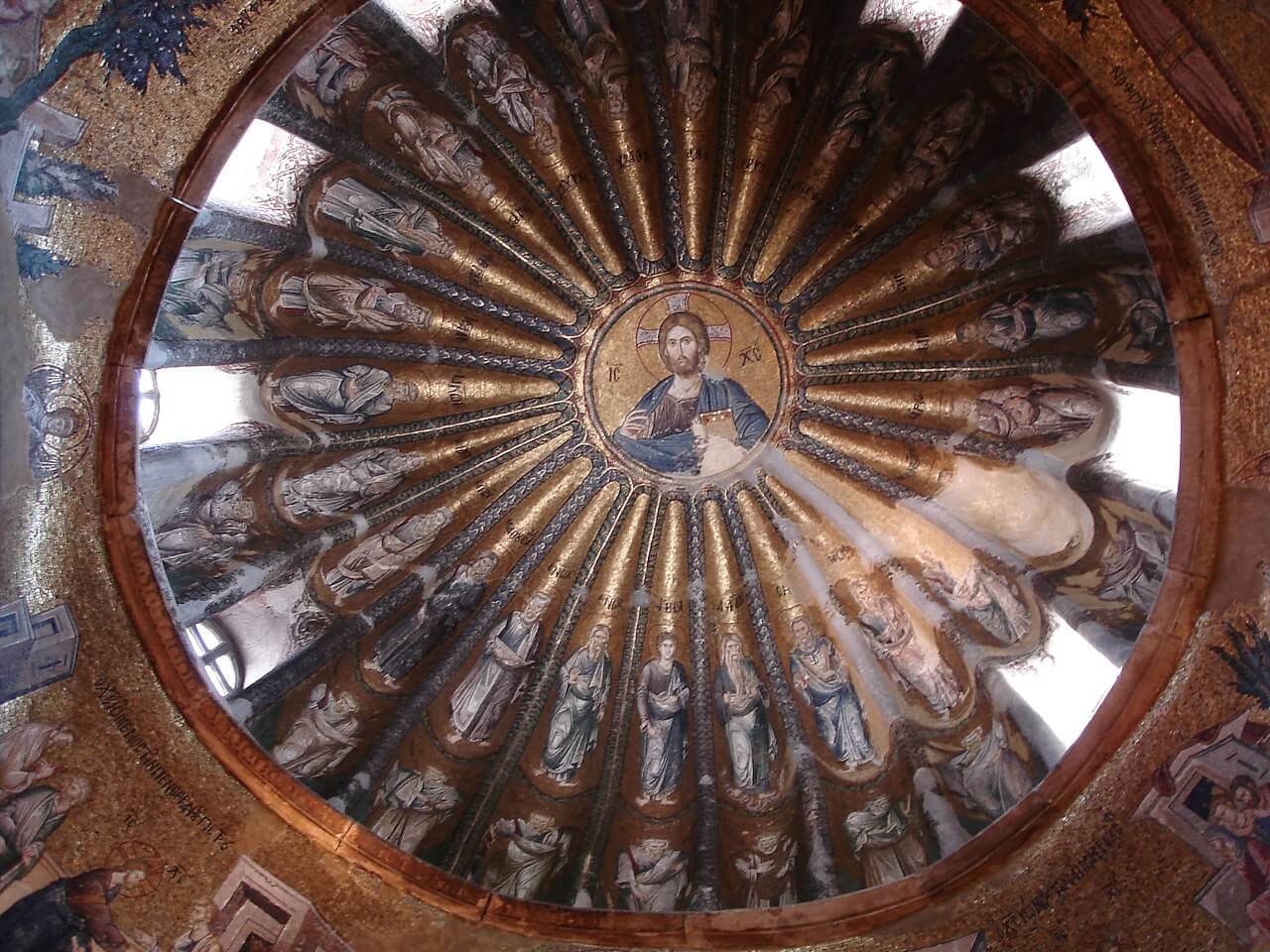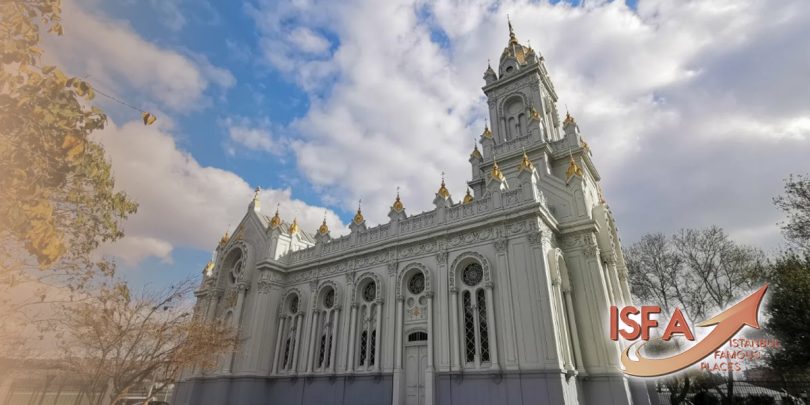
Unveiling the City’s Spiritual Treasures
Istanbul, the enchanting city where East meets West, is not only a blend of cultures but also of religions. With its unique geographical and historical positioning, Istanbul boasts numerous churches that stand as silent witnesses to its rich past. This guide to the Churches of Istanbul takes you on a journey, revealing the stories that these architectural marvels have to tell.
Stepping into Istanbul is like opening a treasure chest filled with architectural wonders. Among these, the churches hold a special place, as they embody the city’s rich Christian heritage. As you navigate through the narrow lanes and expansive boulevards, the churches stand as mute spectators, their spires piercing the sky, beckoning visitors to uncover their tales.
Istanbul, a significant hub for Christianity, especially during the Byzantine era, is home to some of the world’s most revered and ancient churches. From the iconic Hagia Sophia in Constantinople to lesser-known gems hidden in its nooks and crannies, the city’s churches tell tales of faith, conquests, art, and resilience.
As we delve deeper into our exploration of Churches in Turkey, Istanbul stands out as a repository of these spiritual treasures, with each church having its unique narrative waiting to be told.
Hagia Sophia: The Jewel of Constantinople
Hagia Sophia, once called Hagia Sophia in Constantinople, is undoubtedly the crown jewel among the Churches of Istanbul. With its massive dome and majestic minarets, it stands as a testament to the city’s architectural prowess and religious significance. Originally built as a church, Hagia Sophia has witnessed transformations, becoming a mosque and now a museum.
The Hagia Sophia Church Istanbul is not just an architectural wonder but also a symbol of Istanbul’s intricate past, where two dominant religions, Christianity and Islam, intertwined. This makes it a must-visit for anyone keen on unraveling the religious fabric of the city.
With its breathtaking frescoes, intricate mosaics, and colossal structure, Hagia Sophia invites visitors to step back in time and marvel at Byzantine craftsmanship. Every corner of this magnificent edifice whispers tales of emperors, patriarchs, and sultans.

Hagia Eirene: The Unsung Marvel
While Hagia Sophia often grabs the limelight, Hagia Eirene in Istanbul deserves equal admiration. Nestled within the confines of Topkapi Palace, this church, though lesser known, is a significant part of the city’s Christian heritage. Built on the site of an older church, Hagia Eirene stands as one of the few churches never to have been converted into a mosque.
Its interior, though less ornate compared to its counterparts, resonates with serenity. The austere beauty and its historical significance make Hagia Eirene a must-visit. For those seeking a break from the city’s hustle and bustle, this church offers a peaceful refuge.
While Hagia Sophia and Chora Church often top the list of tourist destinations, Hagia Eirene, with its tranquillity and historical significance, should not be overlooked. It offers a unique blend of history and spirituality, nestled in the heart of Istanbul.
Chora Church and Chora Museum: Mosaics and Frescoes
The Chora Church Istanbul, also known as Kariye Museum or Chora Museum Istanbul, is another gem among Istanbul’s churches. Originally a church, then a mosque, and now a museum, it boasts some of the finest Byzantine mosaics and frescoes, unrivaled in their beauty and craftsmanship.
The stories these mosaics and frescoes depict transport visitors back to Biblical times, narrating tales from the life of Christ and the Virgin Mary. Each mosaic, with its intricate detailing, reflects the zenith of Byzantine artistry, making Chora Church a haven for art and history enthusiasts alike.
Nestled away from the city’s main tourist hubs, the Chora Museum Istanbul offers a serene experience. Every visit here is not just a visual treat but a journey into the heart of Byzantine art and spirituality.
Exploring Lesser-Known Churches
Apart from the aforementioned giants, Istanbul houses several lesser-known churches, each holding its charm and history. These edifices might not make it to every tourist brochure, but they encapsulate the essence of Istanbul’s Christian heritage just as profoundly.
From Armenian Apostolic churches to Greek Orthodox shrines, Istanbul’s religious landscape is diverse and vibrant. Each of these churches offers a unique experience steeped in history and spirituality. For visitors keen on understanding Istanbul beyond its touristy facade, these churches serve as perfect starting points.
Venturing into these lesser-known sanctuaries allows visitors to interact with locals, understand age-old traditions, and even participate in timeless liturgies. It’s an experience that enriches the soul and broadens the horizons.
Istanbul’s Churches Today
Today, the churches in Istanbul play multiple roles. While they stand as iconic landmarks and tourist attractions, they also serve as places of worship, solace, and community gathering. They are a testament to the city’s secular fabric, where diverse religions and cultures coexist harmoniously.
These churches also play an essential role in preserving Istanbul’s architectural heritage. Conservation efforts ensure that these edifices, some of which are millennia old, stand tall, narrating tales of the past to future generations. Whether through restorative projects or daily upkeep, the dedication to maintaining these structures is evident.
As Istanbul modernizes and evolves, these churches stand as anchors, rooting the city in its glorious past while embracing the future. They serve as reminders of the city’s resilience and its ability to adapt, evolve, and yet hold onto its essence.
St. Anthony of Padua: A Neo-Gothic Beauty
Located along the bustling Istiklal Avenue, the St. Anthony of Padua Church stands as one of the most prominent Catholic churches in Istanbul. With its striking Neo-Gothic architecture, it offers a contrasting sight amidst Ottoman-influenced buildings surrounding it.
Constructed in the early 20th century, St. Anthony of Padua is more than just an architectural delight. It’s a melting pot of cultures where locals and expatriates gather for spiritual communion. Its weekend masses are a testament to Istanbul’s cosmopolitan character.
Behind its ornate façade lies a serene interior adorned with stunning frescoes and stained-glass windows. The church, over the years, has become a beacon of solace for many, transcending beyond religious boundaries.
A Fusion of Architectural Eras
One of the mesmerizing aspects of the Churches of Istanbul is their blend of architectural styles. Byzantine domes, Gothic spires, and Baroque facades coexist harmoniously, telling tales of the city’s multifaceted history. This fusion is not just a visual delight but also a testament to Istanbul’s resilience and adaptability.
The Hagia Sophia, for instance, beautifully marries Roman engineering with Byzantine aesthetics, making it an architectural marvel. Similarly, many churches have undergone renovations and restorations over the centuries, with each era leaving its indelible mark, creating a tapestry of styles.
This architectural medley reflects Istanbul’s character – a city that’s both ancient and modern, traditional yet progressive, and above all, inclusive.
The Influence of Christian Denominations
Istanbul’s churches are not just about bricks and mortar; they are living embodiments of the city’s diverse Christian heritage. Istanbul has seen them all, from Orthodox to Catholic to Protestant denominations, and their influence is evident in its spiritual landscape.
The Greek Orthodox community, with its rich traditions, has significantly shaped Istanbul’s religious tapestry. Their celebrations, especially the Easter procession, are a sight to behold. Meanwhile, Armenian Apostolic churches, with their unique liturgies and hymns, add to the city’s spiritual vibrancy.
Catholic churches, like St. Anthony of Padua, cater to a diverse flock, bridging the cultural divide and fostering unity in diversity. With its tapestry of denominations, Istanbul stands as a testament to Christianity’s kaleidoscopic nature.

Church of St. Savior in Chora: Artistic Brilliance
While the Chora Church Istanbul is often associated with its transformation into the Chora Museum, its significance as a church is unparalleled. As one delves deeper into its history, its mosaics and frescoes emerge as highlights of Byzantine art.
Each artwork tells a biblical tale rendered with precision and emotion. The artistry on display is not just about aesthetics but also about theology, capturing the essence of Byzantine spirituality. For art enthusiasts and history buffs alike, the Church of St. Savior in Chora offers a visual feast.
Its location, tucked away from the city’s hustle, adds to its charm, making it a haven of peace and artistic brilliance.
Bulgarian St. Stephen Church: An Iron Wonder
On the picturesque shores of the Golden Horn stands an unusual edifice – the Bulgarian St. Stephen Church. What sets it apart is not just its Neo-Gothic design but its construction entirely from iron. This ‘Iron Church’ is a testament to 19th-century engineering and Istanbul’s multicultural tapestry.
Constructed as a symbol of Bulgarian independence from Ottoman rule, it stands as a monument to resilience, faith, and innovation. Its iron panels, shipped from Vienna, have withstood the test of time, making the church an architectural wonder.
Inside, its wooden altars, intricate icons, and stained-glass windows transport visitors to another era, making every visit a journey through time.

Churches as Centers of Culture and Community
Beyond their spiritual significance, the churches of Istanbul have emerged as centers of culture, art, and community. They host concerts, art exhibitions, and community gatherings, transforming into spaces of cultural exchange.
The Hagia Eirene, for instance, often reverberates with the sounds of classical music, hosting international concerts. Meanwhile, smaller churches often become venues for local community events, fostering unity and camaraderie.
In a city as diverse and dynamic as Istanbul, these churches play a pivotal role in binding communities, fostering dialogue, and, above all, celebrating the spirit of unity in diversity.
FAQ
What is the most famous church in Istanbul?
The Hagia Sophia (or Ayasofya in Turkish) is the holiest building in Istanbul. One of the most recognizable symbols of Istanbul, the Hagia Sophia has a long and illustrious history as a church.
Why is it called Hagia Sophia?
The Greek name “Hagia Sophia” has two possible meanings: “Divine Wisdom” or “Holy Wisdom.” Originally built as a cathedral honoring God’s Divine Wisdom, the name captures the building’s principal function and importance.
Which is the best Byzantine church in Istanbul?
There are a number of noteworthy Byzantine churches in Istanbul, each with its own distinct architectural and historical significance. Which Byzantine church in Istanbul is considered the “best” could be a matter of personal taste and opinion.
Is the Hagia Sophia a mosque or church?
Throughout its history, the Hagia Sophia—also known as Ayasofya in Turkish—has seen several modifications. Almost a thousand years after its construction, it is still the principal place of worship for Eastern Orthodox Christians.
What is the most beautiful church in Turkey?
There is a remarkable variety of beautiful and historically important churches in Turkey, each with its own distinct character. Since different people have different tastes in architecture and design, deciding which church is the “most beautiful” may be a subjective task. But the Chora Church (Kariye Müzesi) in Istanbul is among the most famous and aesthetically beautiful churches in Turkey.
Where are the 7 churches in Turkey?
A collection of early Christian congregations referenced in the New Testament book of Revelation are called the Seven Churches of Asia or the Seven Churches of Revelation. Asia Minor, which is now Turkey, was the site of these churches. Here are the seven houses of worship and their respective locations:
Ephesus (Ephesos): Located in Turkey next to Selçuk, Ephesus was once one of the world’s most important cities. You may still explore the old city’s remains, which include the Basilica of St. John and the Temple of Artemis.
Smyrna, which is now known as İzmir, is a significant Turkish city situated on the Aegean coast. Historic sites like as the Agora and Kadifekale Castle attest to the area’s long and illustrious past.
The ancient remains of Pergamon, which are now known as Bergama, are world-renowned. These include the Red Basilica, the Asclepius Sanctuary, and the Acropolis.
Thyatira (now Akhisar): This town in western Turkey has been around since antiquity.
The archeological site of Sardis, often spelled Sart or Sartmahmut, lies in western Turkey, not far from Salihli. The ancient Lydian Kingdom called this place its capital.
The town of Philadelphia, which is now known as Alaşehir, is located in western Turkey and has a long and storied past.
The ancient city of Laodicea, which is close to modern-day Denizli, is famous for its temple, theater, and stadium that have been well-preserved.
What is the main church in Istanbul?
From a historical perspective, the Hagia Sophia (Ayasofya in Turkish) was the primary church in Istanbul. Originally constructed as a cathedral under the Byzantine Empire, it was the main church of the Eastern Orthodox Christian religion for about a thousand years.
Among the many architectural feats that have brought the Hagia Sophia world fame is its enormous dome, which was revolutionary for its day. The spiritual and religious hub of Eastern Orthodoxy, it was the biggest cathedral in the world for more than a thousand years.
But the Hagia Sophia’s position has evolved over the years. Following the Ottoman conquest of Constantinople (modern-day Istanbul) in 1453, the Hagia Sophia was repurposed as a mosque and given the name “Hagia Sophia Mosque.” For about 500 years, it was a mosque.
During Mustafa Kemal Atatürk’s secularization attempts in 1935, the Hagia Sophia was converted into a museum, marking a more recent event in Turkish history. Originally established as a cultural and historical center, the “Hagia Sophia Museum” welcomed visitors from all over the world.
What is the largest church in Istanbul?
The Hagia Sophia, or Ayasofya in Turkish, is Istanbul’s biggest church. In addition to being the most well-known church in Istanbul, the Hagia Sophia is also widely recognized as one of the world’s most iconic religious and architectural structures.
Who is buried in Hagia Sophia?
No one is laid to rest at Istanbul, Turkey’s Hagia Sophia. Being both a cathedral and a mosque in its past has given it its primary designation as a religious and historical landmark. Despite its lengthy history, it has never been utilized as a burial ground for famous people.
Not as a place of burial, but for its historical importance, magnificent architecture, and breathtaking interior décor, the Hagia Sophia is famous. As one of the most recognizable religious structures in the world, the Hagia Sophia attracts visitors who come to marvel at its rich history, magnificent dome, and elaborate mosaics.
Is Istanbul a holy city?
Although it has a rich religious legacy with other holy cities such as Jerusalem, Mecca, or Varanasi, Istanbul is not universally revered as a “holy city” due to its rich cultural and historical significance.
But Istanbul has been pivotal in the development of several faiths:
Istanbul served as the capital of the Eastern Orthodox Christian church when it was known as Constantinople during the Byzantine Empire. Among its many revered churches was the Hagia Sophia, the principal cathedral of Eastern Orthodoxy. It may not be a sacred city on par with Jerusalem, but it is rich in Christian history and hence very important.
In terms of Islam, Istanbul is significant because of its many ancient mosques, such as the Blue Mosque (Sultan Ahmed Mosque), the Hagia Sophia (which has served as a mosque and a church), and others. Throughout Istanbul’s long history, Islamic architecture and culture have flourished.
Other Faiths: Judaism is only one of several faiths that have lived in Istanbul throughout the city’s history. The Neve Shalom Synagogue is one of several synagogues in the city.
Tourists interested in learning about the interaction of different religions and the architectural wonders they have inspired will find Istanbul to be an intriguing and culturally rich destination, even though it is not a holy city in the traditional sense.

